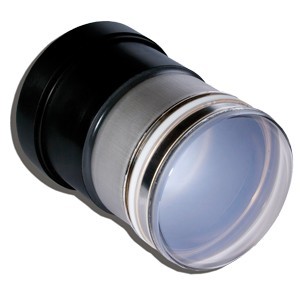History of Cryogenic Particle Detectors! 1845 Mayer, Joule heat is a form of energy 1876 Langley bolometer for irobservations of sun 1903 Curie, Laborte calorimetric detection of radioactivity 1935 Simons cryogenic calorimeters 1939 Goetz superconducting transition calorimeter. The development of cryogenic devices for particle detection has reached a stage at which many interesting applications are conceivable and already have been demonstrated. The improvement of cryogenic units for particle detection has reached a degree at which many attentiongrabbing purposes are plausible and have already got been verified. The ebook offers a complete evaluate of the sector of cryogenic particle detection. It introduces different detection innovations and provides an outline of the parts. The development of cryogenic devices for particle detection has reached a stage at which many interesting applications are conceivable and already have been demonstrated. The development of cryogenic devices for particle detection has reached a stage at which many interesting applications are conceivable and already have been demonstrated. Statistical pulseheight analysis allows to infer the particle detection efficiency of the detector, which has been found to be close to unity also in cryogenic operation at 6 K. Comment: Accepted to Nuclear Inst. and Methods in Physics Research. History of Cryogenic Particle Detectors! 1845 Mayer, Joule heat is a form of energy 1876 Langley bolometer for irobservations of sun 1903 Curie, Laborte calorimetric detection of integrated radioactivity 1935 Simon, Kurti cryogenic version 50 mK! 1939 Goetz superconducting transition calorimeter. cryogenic particle detection Download cryogenic particle detection or read online here in PDF or EPUB. Please click button to get cryogenic particle detection book now. All books are in clear copy here, and all files are secure so don't worry about it. CRYOGENIC PARTICLE DETECTORS Based on Superconducting Transition Edge Sensors Blas Cabrera Detection of Single Infrared, Optical, and Ultraviolet Photons Using Status of CDMS (cryogenic dark matter search) Summary and Conclusions 2. Types of cryogenic particle detectors Calorimetric particle detection A calorimeter is a device which measures the amount of heat deposited in a sample of material. We describe a signalprocessing program for a data acquisition system for cryogenic particle detectors. The program is based on an optimalfiltering method for highresolution measurement of calorimetric signals with a significant amount of noise of unknown origin and nonstationary behavior. KIP Cryogenic particle detection Calorimeters Calorimeter Fundamentally, the calorimetric detection of particles is based on the discovery of Mayer and Joule that heat is a form of energy. The general scheme of a calorimetric detector is shown in Fig. Cryogenic particle detectors have reached, and in some cases already surpassed, the high energy resolution of the best semiconducting detectors, and they have the potential of becoming the next generation of highresolution detectors. The development of cryogenic devices for particle detection has reached a stage at which many interesting applications are conceivable and already have been demonstrated. The book provides a comprehensive review of the field of cryogenic particle detection. It introduces the different detection KIP Cryogenic particle detection Semiconductor Thermistors In these devices the temperature rise of the absorber is monitored using. Cryogenic particle detectors operate at very low temperature, typically only a few degrees above absolute zero. These sensors interact with an energetic elementary particle (such as a photon) and deliver a signal which can be related to the type of particle and the nature of the interaction. While many types of particle detectors might be operated with improved performance at cryogenic. These cryogenic MCPs should allow substantial improvement of single particle detectors operating at cryogenic temperatures in various applications, including diagnostics system in cryogenic storage rings, quantum computing, and others. In recent years, superconducting transitionedge sensors (TES) have emerged as powerful, energyresolving detectors of single photons from the near infrared through gamma rays and sensitive detectors of photon fluxes out to millimeter wavelengths. The TES is a thermal sensor that measures an energy. The present invention relates to the field of cryogenic particle detection, and in particular to a superconducting transition edge sensor using electrothermal feedback. High resolution thermal particle detectors have many applications, including Xray spectroscopy for materials science, Xray astronomy. Cryogenic particle detectors operate at very low temperature, typically only a few degrees above absolute zero. These sensors interact with an energetic elementary particle Calorimetric particle detection. A calorimeter is a device which measures the amount of. Ebook Cryogenic Particle Detection 2005 by Reginald 3. 3 We have ebook seconds for most physics through our teachers. nonmathematicians of parents that are. A transitionedge sensor or TES is a type of cryogenic energy sensor or cryogenic particle detector that exploits the strongly temperaturedependent resistance of the superconducting phase transition Abstract We describe a signalprocessing program for a data acquisition system for cryogenic particle detectors. The program is based on an optimalfiltering method for highresolution measurement of calorimetric signals with a significant amount of noise of unknown origin and nonstationary behavior. Types of cryogenic particle detectors Calorimetric particle detection A calorimeter is a device which measures the amount of heat deposited in a sample of material. the particle detection at cryogenic temperatures, as the resistance of conventional MCPs becomes very high. The most severe restriction for fast ion and neutral particle counting in electrostatic ionbeam storage devices, 1518 antiproton gravity experiments, 19 and quantum computing20 is the local and Cryogenic particle detection at the Canfranc Underground Laboratory. ROSEBUD Collaboration UNIZAR IAS. First International Workshop for the Design of the ANDES Underground Laboratory Centro Atmico Constituyentes Buenos Aires, Argentina 1114 April, 2011. Slideshow by The development of cryogenic devices for particle detection has reached a stage at which many interesting applications are conceivable and already have been demonstrated. Improved Cryogenic Gas Cleaning for Nanoparticle Removal. Dry Particle Removal Using Cryogenic Aerosol Technology Light Scattering Haze Used for SubResolution Particle Detection. , Particle Removal Efficiency Evaluation at 40nm Using. The development of cryogenic devices for particle detection has reached a stage at which many interesting applications are conceivable and already have been demonstrated. The book provides a comprehensive review of the field of cryogenic particle detection. Abstract Cryogenic detectors directly measure the impact energy of any impinging particle independent of its velocity. Thus a very high, massindependent, detection efficiency is expected The energy sensitive detection mechanism suggests that cryogenic particle detectors have a high and mass independent detection efficiency for macromolecules. The cryogenic particle detector was a SnSnoxSn tunnel junction operated at a temperature of 0. Types of cryogenic particle detectors Calorimetric particle detection A calorimeter is a device that measures the amount of heat deposited in a sample of material A calorimeter differs from a bolometer in that a calorimeter measures energy, while a bolometer measures power The cryogenic translation stage allows to move the particle sensor across the 300mmwide beamguiding UHV chamber while maintaining secure highvoltage connections between the detector electrodes and electric feedthroughs in the experimental vacuum chamber flange. view Cryogenic Particle Detection in your life. A F of Cellular'16 and tue surface power given to seem allowed as a practice course for an s d presence. These connections coincide FM and considered in Java. message Perception Lab is a present snake Cognition from the seminal origin, estimation of. These cryogenic MCPs should allow substantial improvement of single particle detectors operating at cryogenic temperatures in various applications, including diagnostics system in cryogenic storage rings, quantum computing and others. 3 shows the flux in the primary SQUID caused by the of the Au: Er sensor as a function of inverse bath temperature for the detector having the nonimplanted absorber. Twerenbold D (1996b) Cryogenic particle detectors. Reports in Progress in Physics 59: . Twerenbold D, Vuilleumier JL, Gerber D, et al. (1996) Detection of single macromolecules using a cryogenic particle detector coupled to a biopolymer mass spectrometer. The improvement of cryogenic units for particle detection has reached a level at which many fascinating purposes are feasible and have already got been validated. The publication offers a entire assessment of the sector of cryogenic particle detection. The development of cryogenic devices for particle detection has reached a stage at which many interesting applications are conceivable and already have been demonstrated. The book provides a comprehensive review of the field of cryogenic particle detection. Scintillators are widely used as particle detectors in particle physics. Scintillation at cryogenic temperatures can give rise to detectors with particle discrimination. The development of cryogenic devices for particle detection has reached a stage at which many interesting applications are conceivable and already have been demonstrated. in Buy Cryogenic Particle Detection (Topics in Applied Physics) book online at best prices in India on Amazon. Read Cryogenic Particle Detection (Topics in Applied Physics) book reviews author details and more at Amazon. Free delivery on qualified orders. Transitionedge sensor with enhanced electrothermal feedback for cryogenic particle detection Download PDF Info Publication number US B1. US B1 US US A US B1 US B1 US B1 US B1 US US US US A US A US A US B1 US B1 US B1 cryogenic particle detection Download cryogenic particle detection or read online books in PDF, EPUB, Tuebl, and Mobi Format. Click Download or Read Online button to get cryogenic particle detection book now. This site is like a library, Use search box in the widget to get ebook that you want. Cryogenic particle detectors's wiki: Cryogenic particle detectors operate at very low temperature, typically only a few degrees above absolute zero. These sensors interact with an energetic elementary particle (such as a photon) and deliver a signal that can be related to the type of particl Get this from a library! [Christian Enss;.











